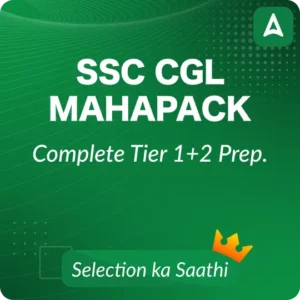The DSSSB Forest Guard Syllabus 2025 is your roadmap to success in the upcoming recruitment exam. With a well-structured exam pattern and clearly defined topics, candidates can plan their preparation efficiently. Whether you’re focusing on General Awareness, Reasoning, or Language sections, this article covers it all.
DSSSB Forest Guard Syllabus And Exam Pattern 2025
Preparing for the DSSSB Forest Guard Recruitment 2025? Then your first step should be to go through the official DSSSB Forest Guard Syllabus and Exam Pattern 2025. To score high and qualify for the next stage, it’s crucial to understand the subject-wise topics and the structure of the exam. This post offers a complete overview of the DSSSB Forest Guard written test. Plus, we’ve included a direct PDF download link so you can access the syllabus instantly and plan your study strategy effectively.
Forest Guard Syllabus 2025: Key Highlights
If you’re preparing for the DSSSB Forest Guard Exam 2025, knowing the key highlights is essential. From the conducting authority to job location and official updates, this section provides a brief overview to help you get started with the right information.
| DSSSB Forest Guard Syllabus 2025: Key Highlights | |
| Conducting Body | Delhi Subordinate Services Selection Board (DSSSB) |
| Post Name | Forest Guard |
| Category | Syllabus |
| Status | Released |
| Job Location | Government of NCT of Delhi |
| Official Website | https://dsssb.delhi.gov.in |
DSSSB Forest Guard Detailed Syllabus 2025
The DSSSB Forest Guard Syllabus 2025 covers all key subjects including General Awareness, Reasoning, Quantitative Aptitude, English, and Hindi Language. Candidates must go through the detailed syllabus to plan effective preparation and boost their exam readiness.
A. Delhi Forest Ranger Syllabus
| Subject | Topics Covered |
|---|---|
| General Intelligence & Reasoning | Verbal and Non-verbal Questions: Analogies, Similarities & Differences, Space Visualization, Spatial Orientation, Problem Solving, Analysis, Judgment, Decision Making, Visual Memory, Discrimination, Observation, Relationship Concepts, Arithmetical Reasoning, Figural Classification, Arithmetic Number Series, Non-verbal Series, Coding-Decoding, Statement Conclusion, Syllogistic Reasoning, etc.Specific Topics: Semantic Analogy, Symbolic/Number Analogy, Figural Analogy, Semantic Classification, Symbolic/Number Classification, Figural Classification, Semantic Series, Number Series, Figural Series, Word Building, Numerical Operations, Symbolic Operations, Trends, Space Orientation, Venn Diagrams, Drawing Inferences, Pattern Folding & Unfolding, Indexing, Address Matching, Date & City Matching, Classification of Centre Codes/Roll Numbers, Small & Capital Letters/Numbers Coding & Classification, Embedded Figures, Critical Thinking, Emotional & Social Intelligence |
| General Awareness | Environment and its application, Current Events, Scientific observations and experiences, History, Culture, Geography, Economic Scene, General Policy, Scientific developments, India and its Neighbouring Countries |
| Quantitative Aptitude | Computation of Whole Numbers, Decimals, Fractions, Relationships Between Numbers, Percentages, Ratio & Proportion, Square Roots, Averages, Interest, Profit & Loss, Discount, Partnership, Mixture & Alligation, Time & Distance, Time & Work, Basic Algebra, Graphs of Linear Equations, Triangle and its Centres, Congruence & Similarity of Triangles, Circle & Chords, Tangents, Angles, Common Tangents, Quadrilaterals, Heights & Distances, Histogram, Bar Diagram & Pie Chart |
| English Language & Comprehension | Spotting Errors, Fill in the Blanks, Synonyms, Antonyms, Spelling/Detecting Misspelled Words, Idioms & Phrases, One-word Substitution, Sentence Improvement, Active/Passive Voice, Direct/Indirect Speech, Sentence Arrangement, Passage Arrangement, Cloze Test, Comprehension |
| Science & Technology | Physics: Units & Dimension, Motion, Work, Energy, Gravitation, Pressure, Floatation, Surface Tension, Viscosity, Elasticity, SHM, Sound Waves, Thermodynamics, Light, Electricity, Magnetism, Atomic Physics, Scientific Instruments, Inventions, Radioactivity, Fission & Fusion, Electromagnetism, Forces, Kinetic Theory, Magnetic Effect, Human Eye
Chemistry: Matter, Atomic Structure, Bonding, Periodic Table, Oxidation-Reduction, Acids, Bases, Salts, Gases, Electrolysis, Carbon Compounds, Fuels, Metallurgy, Metals & Non-metals, Reactions, Electrochemistry, Catalyst, Hydrocarbons, Drugs, Chemicals, Fertilizers, pH Concepts Biology (Optional): Introduction, Classification of Organisms, Cytology, Genetics, Structure of Plant and Animal Cell, Classification of Plant Kingdom, Plant Morphology, Plant tissue, Photosynthesis, Plant Hormones, Plant Diseases, Mode of Nutrition in Plant, Control and Coordination in Plant, Sexual Reproduction in Flowering Plant, Asexual Reproduction in Plant, the Transport system in Plant, Respiration, and Excretion in plants, The Cell: The foundation of all living things, Cell: Structure and Functions, Control and Coordination in Human, Human Reproductive system, Excretory system in Humans, Respiratory system in Humans, Human Circulatory system, The Heart, Composition of Blood, Functions of Blood, Human Digestive system, Cell Division, Food and Nutrition, Human Diseases, Nuclear fission, and nuclear fusion, Classification of Animal Kingdom, The five kingdoms of life, Mode of Nutrition in Animal, Nutrition in Animal, Sexual Reproduction in Animal, Respiration in Animals. |
| Mathematics (Optional) | Real Numbers, Polynomials, Linear Equations, Quadratic Equations, Progressions, Triangles, Coordinate Geometry, Trigonometry, Circles, Constructions, Areas, Surface Areas & Volumes, Statistics, Probability, Graphs |
| Technology | Role of S&T in Development, Life/Natural Sciences, Agriculture & Energy, Ecology Challenges, Infrastructure (Energy, Ports, Roads, Railways), Renewable & Non-renewable Energy, Biotechnology (GM Crops, Bt Brinjal/Cotton, Genetic Pollution), IT & Computer Terms, Nanotechnology, Space Technology, Orbits, Satellites, EM Spectrum, Wireless Generations (3G/4G), Food & Nutrition, Modern Agriculture Issues, Fertilizer-Pesticide Problems, Organic Farming |
| Environment | Pollution, Degradation, EIA, Biodiversity (Hotspots, IUCN, Red Data), Ecosystems (Aquatic, Marine, Estuarine, Mangroves, Terrestrial – Tundra, Desert, Grassland), Energy Flow, Thermodynamics, Productivity, Food Chain, Food Web, Ecology, Environmental Terms, Types of Pollution (Acid Rain, Smog, GHG, Ozone), Waste Management, Sustainable Development, Wildlife Conservation, National Parks, Climate Change (Kyoto, Montreal), Sensitive Areas (Ghats, Himalayas), Environmental Laws, Bodies (UNEP, FAO, UNESCO), Ramsar, Rio Conventions (CBD, UNFCCC, UNCCD), Carbon Trading, Kyoto Mechanisms |
B. Delhi Forest Guard & Wildlife Guard Syllabus
| Subject | Topics Covered |
|---|---|
| General Awareness | Environment and its Application, Current Events, Observational Science, History, Polity, Constitution, Sports, Art & Culture, Geography, Economics, Scientific Research, National/International Institutions |
| General Intelligence & Reasoning Ability | Verbal & Non-verbal Reasoning: Analogies, Similarities, Differences, Space Visualization, Problem Solving, Analysis, Judgment, Decision Making, Visual Memory, Discrimination, Observation, Relationships, Concepts, Arithmetical Reasoning, Classification, Number Series |
| Arithmetical & Numerical Ability | Number Systems, Simplification, Decimals, Fractions, LCM & HCF, Ratio & Proportion, Percentage, Average, Profit & Loss, Discount, Simple & Compound Interest, Mensuration, Time & Work, Time & Distance, Tables & Graphs (10th Level) |
| Hindi Language & Comprehension | Vocabulary, Grammar, Sentence Structure, Synonyms, Antonyms, Correct Usage, Comprehension |
| English Language & Comprehension | Vocabulary, Grammar, Sentence Structure, Synonyms, Antonyms, Correct Usage, Comprehension |
DSSSB Forest Guard Exam Pattern 2025
The Delhi Subordinate Services Selection Board (DSSSB) conducts recruitment examinations for various posts including Forest Ranger, Forest Guard, and Wildlife Guard/Game Watcher. Candidates preparing for these posts must be aware of the exam pattern and physical standards to clear each stage of the selection process. The selection process typically includes:
- Stage-I: Written Examination
- Stage-II: Physical Standard Test
Written Exam Pattern for Forest Ranger
The Forest Ranger written exam is the first stage of the selection process, comprising 200 objective-type questions across general and subject-specific topics. The exam is conducted for a total of 200 marks.
| Subject Name | Marks | Number of Questions |
|---|---|---|
| General Intelligence & Reasoning | 25 | 25 |
| General Awareness | 25 | 25 |
| Quantitative Aptitude | 25 | 25 |
| English Comprehension | 25 | 25 |
| Physics, Chemistry, Maths/Biology, Technology & Environment | 100 | 100 |
| Total | 200 | 200 |
Marking Scheme :
- Correct Answer – 01 marks will be awarded
- Negative Marking – 0.25 deducted for wrong answer/multiple answers marked
Written Exam Pattern Delhi Wildlife Guard
The Delhi Wildlife Guard Recruitment Exam 2025 will be conducted for a total of 200 marks, assessing candidates across five key subjects — General Intelligence & Reasoning, General Awareness, Quantitative Aptitude, English Language & Comprehension, and Hindi Language & Comprehension. Each section carries equal weightage. Below is the complete subject-wise Delhi Wildlife Guard exam pattern to help you prepare effectively.
| Subject Name | Marks | Number of Questions |
| General Intelligence + Reasoning | 40 | 40 |
| General Awareness | 40 | 40 |
| Quantitative Aptitude | 40 | 40 |
| English Language & Comprehension | 40 | 40 |
| Hindi Language & Comprehension | 40 | 40 |
| Total | 200 | 200 |
Marking Scheme :
- Correct Answer – 01 marks will be awarded
- Negative Marking – 0.25 deducted for wrong answer/multiple answers marked
Physical Standard Test (PST)
After successfully clearing the written examination, candidates applying for the Forest Ranger and Forest Guard positions must appear for the Physical Standard Test (PST). This stage evaluates the candidate’s physical fitness based on specific height and chest measurements.
Applicants who meet these criteria will further undergo a Physical Efficiency Test (PET), where they must complete a specified distance on foot within a set time limit. Meeting both physical measurement and endurance standards is mandatory to proceed to the final selection stage.
Forest Ranger
|
Gender
|
Height
|
Chest Girth | |
| Normal | Expand | ||
| Male | 163 | 84 | 5 |
| Female | 150 | 79 | 5 |
| Gender | Height |
| Male | 152 |
| Female | 145 |
- Male/Female candidates must pass a Physical Test Covering a distance of 25/16 KMs respectively within four hours on foot.
Forest Guard
|
Gender
|
Height
|
Chest Girth | |
| Normal | Expand | ||
| Male | 163 | 84 | 5 |
| Female | 150 | 79 | 5 |
For Scheduled Tribes and Races such as Assamese, Bhutanese, Garhwali, Gorkhas, Kumaonise, Ladakhese, Mizo, Naga, Nepalese, Sikkimese and those from Arunachal Pradesh, Lahaul and Spiti, Meghalaya height standards
| Gender | Height |
| Male | 152 |
| Female | 145 |
- Male/Female candidates must pass a Physical Test Covering a distance of 25/16 KMs respectively within four hours on foot.
Wildlife Guard/ Game Watcher
- There will be no Physical Test conducted for this post.
Exam Preparation Tips For Forest Guard Exam 2025
Cracking the Forest Guard Exam 2025 conducted by DSSSB requires a well-planned strategy, consistent practice, and smart preparation. Here are some expert-backed tips to help you prepare effectively:
- Understand the exam pattern & syllabus: Highlight important topics from the syllabus PDF.
- Create a daily study plan: Allocate time for all subjects and daily revision.
- Focus on current affairs & static GK: Read newspapers and revise History, Polity, Geography.
- Practice reasoning & aptitude daily: Use tricks to improve speed and accuracy.
| Also check |
| DSSSB Forest Guard Salary |



 TGSRTC Syllabus & Exam Pattern 2026 ...
TGSRTC Syllabus & Exam Pattern 2026 ...
 OSSSC Excise Constable Syllabus and Exam...
OSSSC Excise Constable Syllabus and Exam...
 UPPSC Syllabus and Exam Pattern 2026, Ch...
UPPSC Syllabus and Exam Pattern 2026, Ch...




 Adda247 Job portal has complete information about all Sarkari Jobs and Naukri Alerts, its latest recruitment notifications, from all state and national level jobs and their updates.
Adda247 Job portal has complete information about all Sarkari Jobs and Naukri Alerts, its latest recruitment notifications, from all state and national level jobs and their updates.



